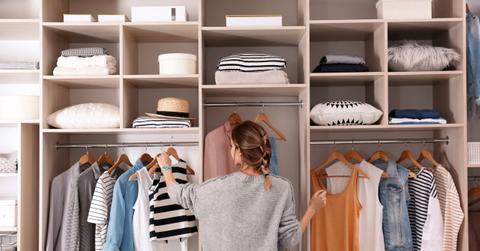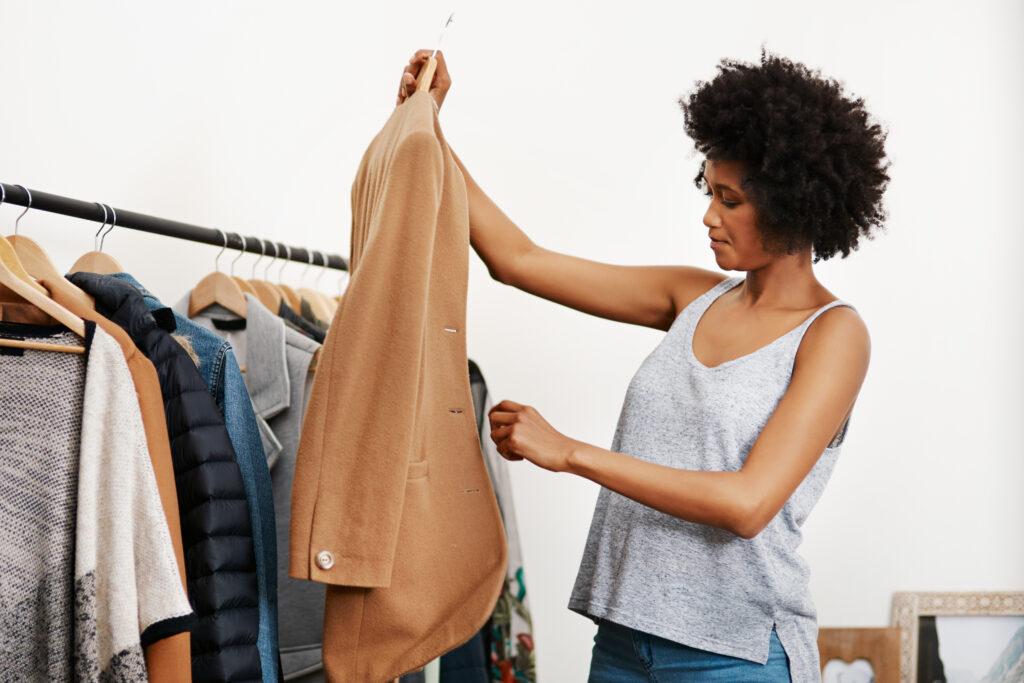How To Build A Confidence-Boosting Wardrobe Without Breaking The Bank

Clothing is a powerful, non-verbal expression of identity. Dressing confidently extends beyond mere aesthetics; it influences mental and emotional well-being, fostering a positive body image and radiating self-assurance.
Building a wardrobe that empowers you doesn’t demand a luxury budget. It’s about selecting pieces that resonate with your personal style and offer versatility for everyday confidence. Fashion is a constantly evolving yet repeating cycle, making it difficult to determine what to wear and how to budget for it.
If you’re looking for help, here’s how to build a confidence-boosting wardrobe without breaking the bank.

Declutter
Fashion experts agree that decluttering your closet is the first step in creating a confidence-boosting wardrobe. Gab Saper, founder of Wardrobe Editor, said on the Wannabe Clutter Free podcast that we don’t wear what we can’t see.
“How your closest is set up dictates what you put on your body,” she said. “If there is something you love and you can’t see it, you’re likely not to remember it’s there.”
Other decluttering tips, like the 90/90 rule suggest that if you haven’t worn an item in 90 days and won’t wear it in the next 90, donate or sell it.
Define Your Style And Needs
If you want to add more muted colors to your vibrant wardrobe or seek specific pieces like a blazer or suit, choose versatile and beneficial options for your lifestyle. Prioritize clothing that you feel comfortable in and truly enjoy wearing.
InStyle’s Senior Fashion Editor, Samantha Sutton, suggests considering the core of your wardrobe.
“Think about the versatile pieces you yourself can’t quit, then style your outfits around them,” she said. “If you love wearing button-downs, use them as sweaters, layer them under overalls, or wear them as cover-ups.”
If you’re having trouble defining your style, sites like Stich Fix have an online test for help.
Set A Wardrobe Budget
Financial advisors suggest saving 5% of your after-tax income for clothing purchases. For example, with a net monthly income of $2,400, you should keep your monthly clothing budget around $120.
While organizing your closet, consider selling good-condition items online via platforms like Facebook Marketplace or Poshmark, or check out local clothing exchange shops to make some extra money. You can also explore other second-hand retailers online, such as Depop, ThredUP, or Etsy.

Shop Wisely
“Whether you’re buying or selling, consignment shops can be your best friend,” said fashion influencer and TV personality Natalie Halcro.
Consignment shops and thrift stores don’t experience seasonal shifts, making it easier to discover essential items. If you find an item too large or missing a button, consider taking it to your nearby dry cleaner tailor for adjustments.
Those who favor brand new apparel should explore the sales or clearance sections first, especially during the end-of-the-season or after-holiday sales. And remember, you don’t have to buy everything at once. Shop around, compare prices and deals, and purchase items when possible.
Rent
If you’re short on space or money or require items for a limited time, consider clothing rental services. Clothing rental sites like Nully and Armoire offer monthly subscriptions that provide a selection of styles for 30 days, with free shipping and returns included.
These services benefit individuals uncertain about their style and want to explore before making a financial commitment.
Capsule Wardrobe
A capsule wardrobe involves choosing pieces that complement each other rather than collecting items that clash. This approach saves money, space, and time by reducing clothing coordination issues and indecisions.
“The idea of a capsule wardrobe can be completely different for everyone,” said Rent the Runway stylist Maeve Reilly. “Your capsule is your go-to items that make you feel confident and comfortable.”






